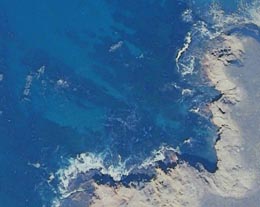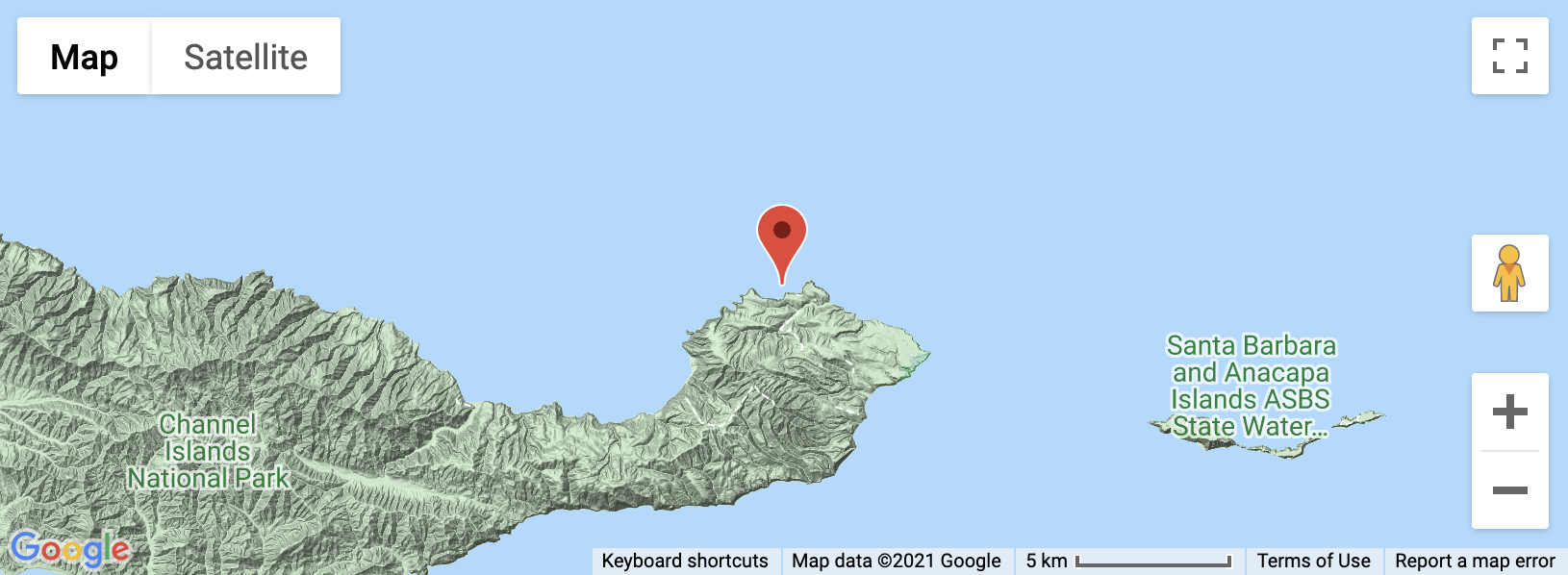
One of the most interesting and sometimes irritating aspects of sea kayaking around Santa Cruz Island is the kelp forested areas along the coastline. These large mats of floating green vegetation thrive in the nutrient rich upwelling waters off the southern California coast and dampen small wind waves around the shoreline.
When kayaking in calm conditions these areas are to be avoided because the kelp forests make paddling difficult and provide extra friction against the hull of the kayak. On the other hand, when conditions are stronger, kelp forests prevent waves from breaking and can make kayaking safer.
The effect of kelp beds is of some interest to our group because a segment of our research involved the study of coastal erosion that results from wave activity. Studies analyzing kelp effects on wave activity return mixed results. One, conducted off San Diego, CA found changes in wave activity not detectable above measurement error[1], while another study found significant energy reduction[2].

Combining firsthand field observations with a brief literature review has led us to believe potential energy is mostly conserved as waves travel through kelp forests, but kinetic energy in the form of accelerating wave crests nearshore is reduced due to drag forces from the kelp on surface particle motion.

REFERENCES
[1] Elwany, et. al. (1995). &Effects of southern California kelp beds on waves. & Journal of Waterway, Port, Coastal, and Ocean Engineering. 121(2): 143-150
[2] Gaylord, et. al. (1979). &Modulation of wave forces on kelp canopies by alongshore currents. & Limnology and Oceanography. 48(2): 860-871
